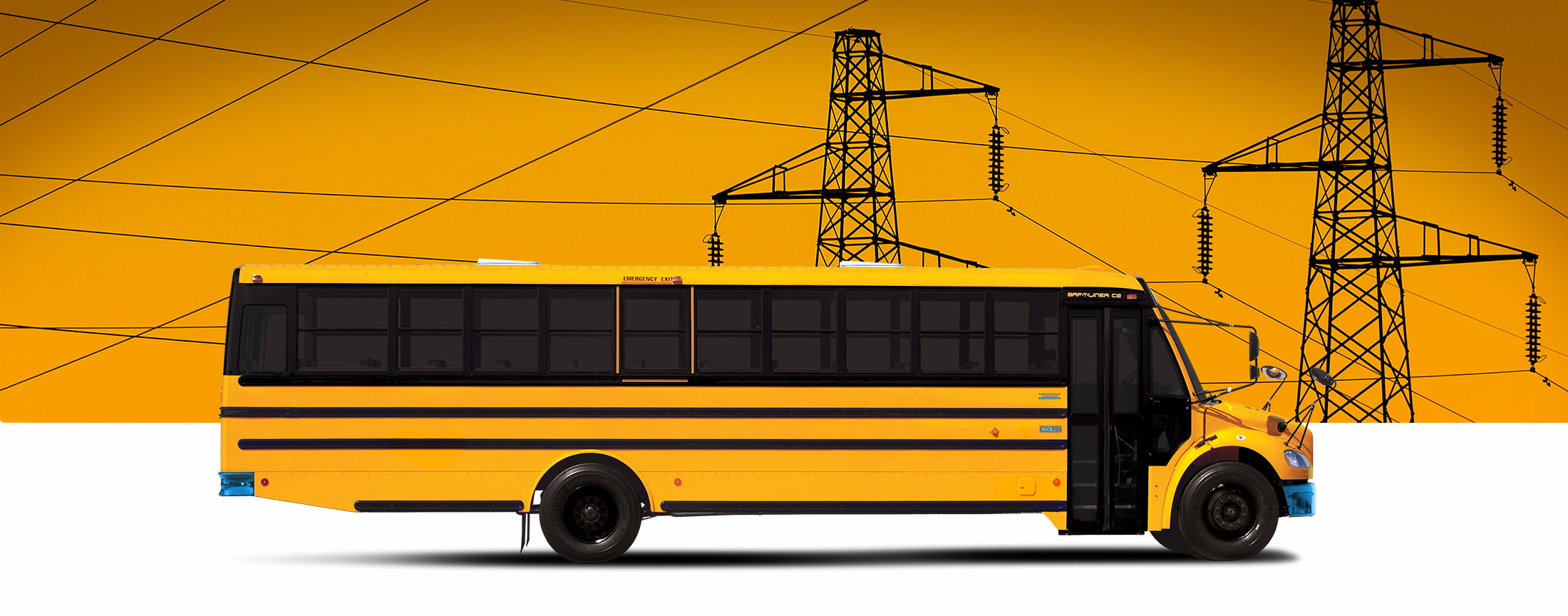
Electric school buses and utility companies:
A powerful combination
Key electric school bus benefits, from sustainability to vehicle-to-grid (V2G) technology
Powering cities with a reliable, affordable and sustainable electric grid takes innovation. Electric school buses can be a central part of that innovation, while also doing what they do best: making communities better. Integrating electric school buses into today’s infrastructure can lead to big opportunities for utility companies and service providers.
Why electric school buses are ideal for electrification
With predictable routes of 30 to 40 miles daily, plenty of time between routes to charge and regular idle periods during summer, electric school buses are a natural fit for electrification.
Predictable daily mileage
Easy-to-manage charging
V2G-ready
Opportunities for utility and service providers to lead the way with electric school buses
Support communities with new, safe electric school buses
By partnering with school districts to purchase new electric school buses, utility and service providers can help schools keep kids:
- Safe – Riding a school bus is 70 times safer than traveling to school in a passenger car.
- Healthy – With zero emissions, electric school buses keep the air in and around the bus clean, which can help kids stay healthy and perform at their best.
- Learning – A new electric school bus can provide kids with equal access to education for years to come.
Make progress toward decarbonization goals
Integrating electric school buses into the power grid can help utility companies and service providers take bold steps toward sustainability and a net-zero-emissions future.
Optimize the electric grid
A fleet of electric school buses can provide important insights into how commercial vehicles affect the grid. This data can help utility and service providers better understand demand charges and time-of-use (TOU) rates so that they can optimize energy management and pricing. In addition, once a fleet reaches the end of its life cycle, utility companies can use electric bus batteries to store electricity for communities.
Harness the power of vehicle-to-grid technology
Connecting electric school buses, like the Saf-T-Liner® C2 Jouley®, to the power grid through V2G can help utility and service providers develop the best ways to deliver electricity to customers.
What is V2G – and what’s in it for utilities?
V2G technology is essentially power delivery in reverse. It enables electricity to be supplied back to the power grid from the batteries of electric vehicles (EVs) – everything from passenger EVs to buses and heavy-duty trucks. With V2G, utility companies can:
Support renewable energy sourcesV2G can make the electric grid greener. That’s because renewable energy resources like wind and solar depend on environmental conditions to be able to generate power. A V2G-enabled charging station and electric vehicle can make renewable resources more predictable and useful to the grid by storing power until it’s needed.
Electric school buses are a safe and accessible asset that utilities and service providers can use to store renewable energy as they grow their solar, wind and hydroelectric power infrastructure.
Strengthen the electric gridUtilities can use school buses as distributed energy resources (DER). DER are small-scale, behind-the-meter sources of electricity generation or storage – like the batteries inside electric school buses – that can add resiliency to the main power grid.
Create a more independent energy infrastructureElectric school buses can help utility companies and service providers reduce their dependency on power plants as well as their need to purchase costly kilowatts of power during periods of high electricity demand.
Tap into a growing power delivery technologyNearly 500,000 school buses in the U.S. spend a lot of time on the road – but they spend even more of it parked. And as the number of electric buses increases, so does the potential for greater vehicle-grid integration and power storage.
How utilities can use V2G and benefit the community
Utility companies and service providers can take advantage of V2G by helping school districts electrify their school bus fleets. By partnering with a district, the utility provider can invest in a pilot program that lowers the financial and logistical challenges involved in the transition. In return, the utility or service provider can work with the district to test the impact of the buses on the grid as well as efficiently supply power back to it during times of peak demand.
Dominion Energy’s Electric School Bus Initiative
In December, 2019, Dominion Energy chose Thomas Built Buses to provide all 50 electric school buses for phase one of its Electric School Bus Initiative. The program aims to support Virginia school districts as they begin to go electric by providing the Thomas Built Saf-T-Liner C2 Jouley electric school bus to districts at roughly the same price as a diesel bus.
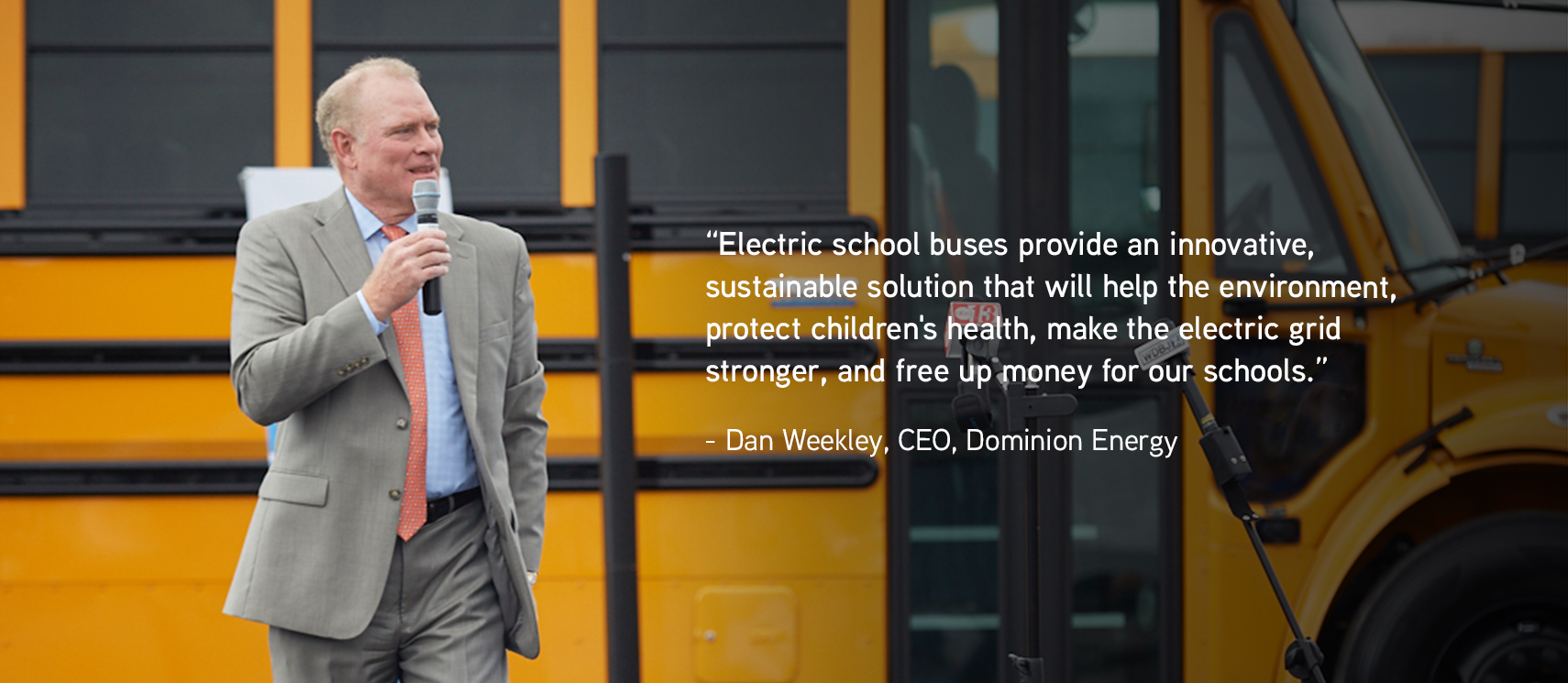

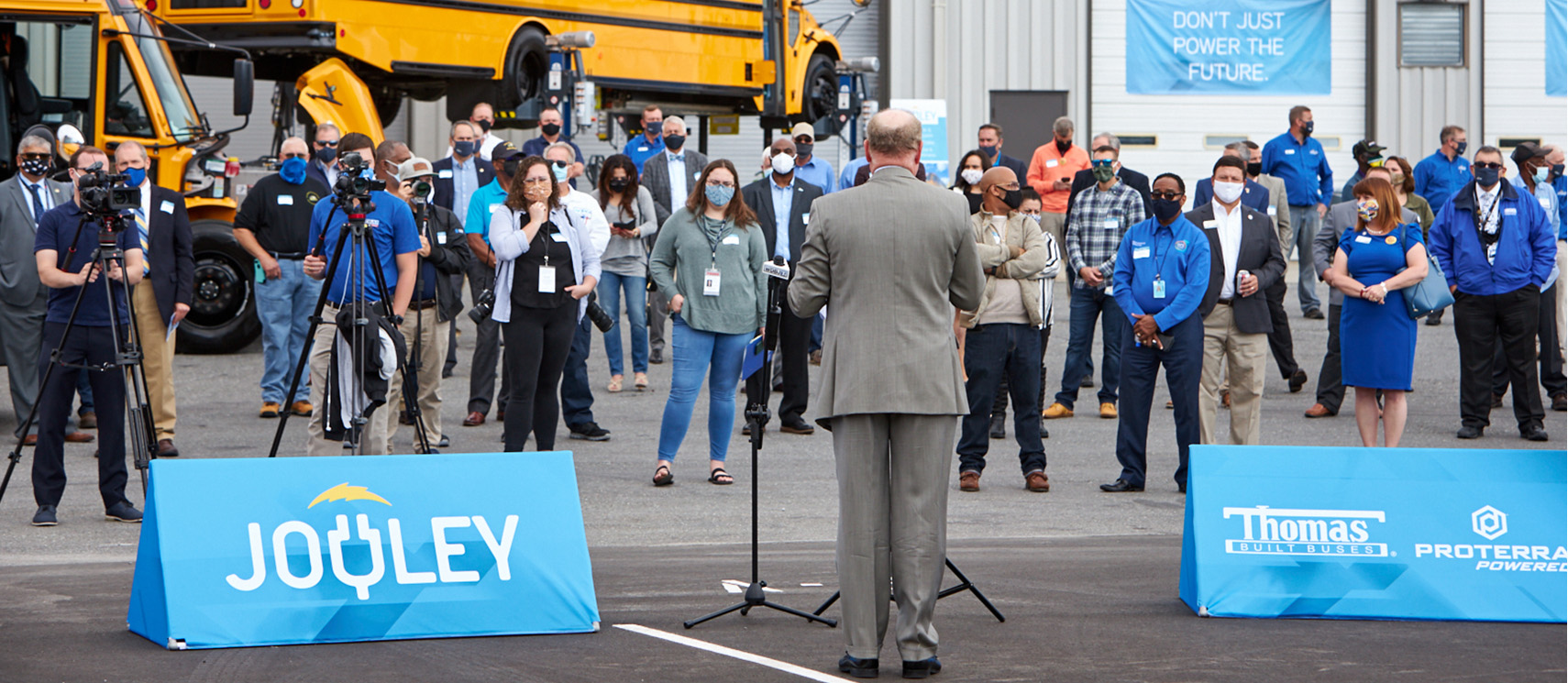
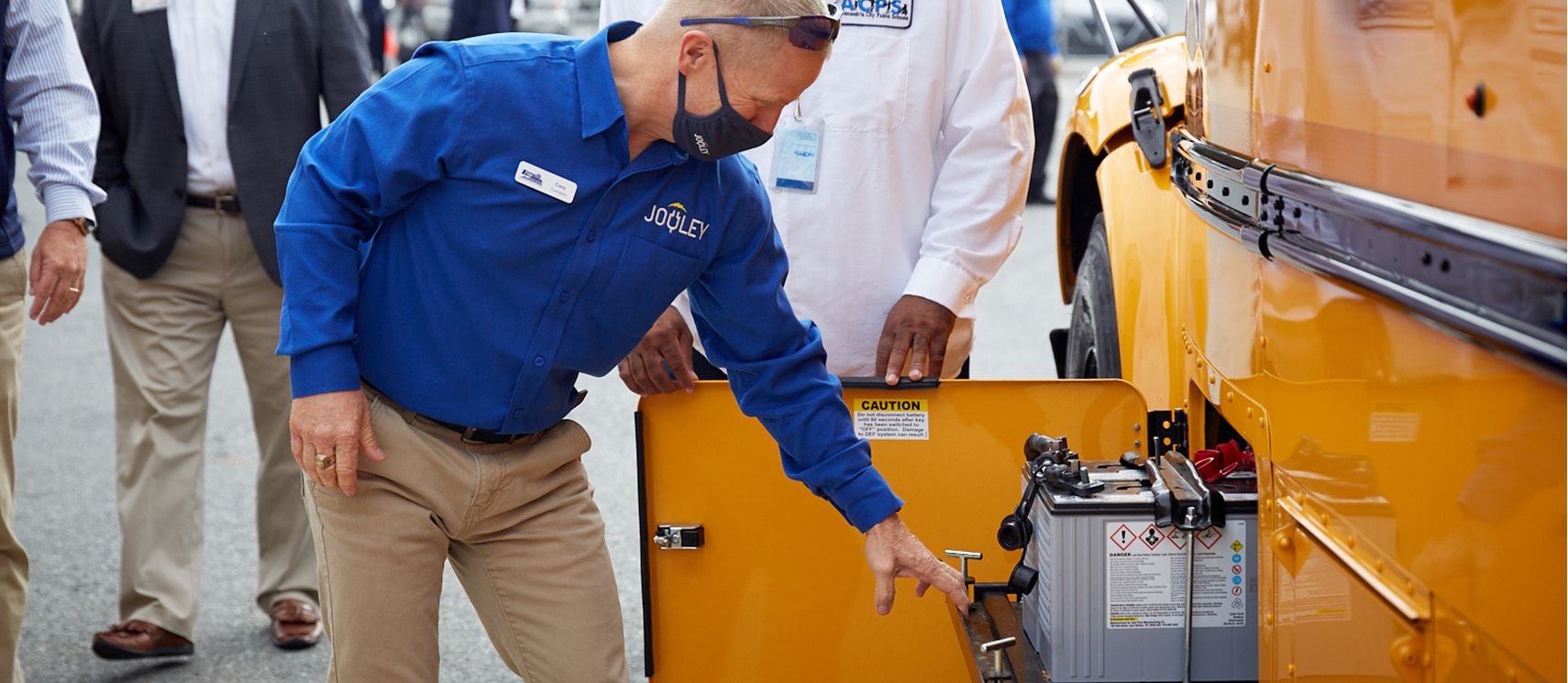
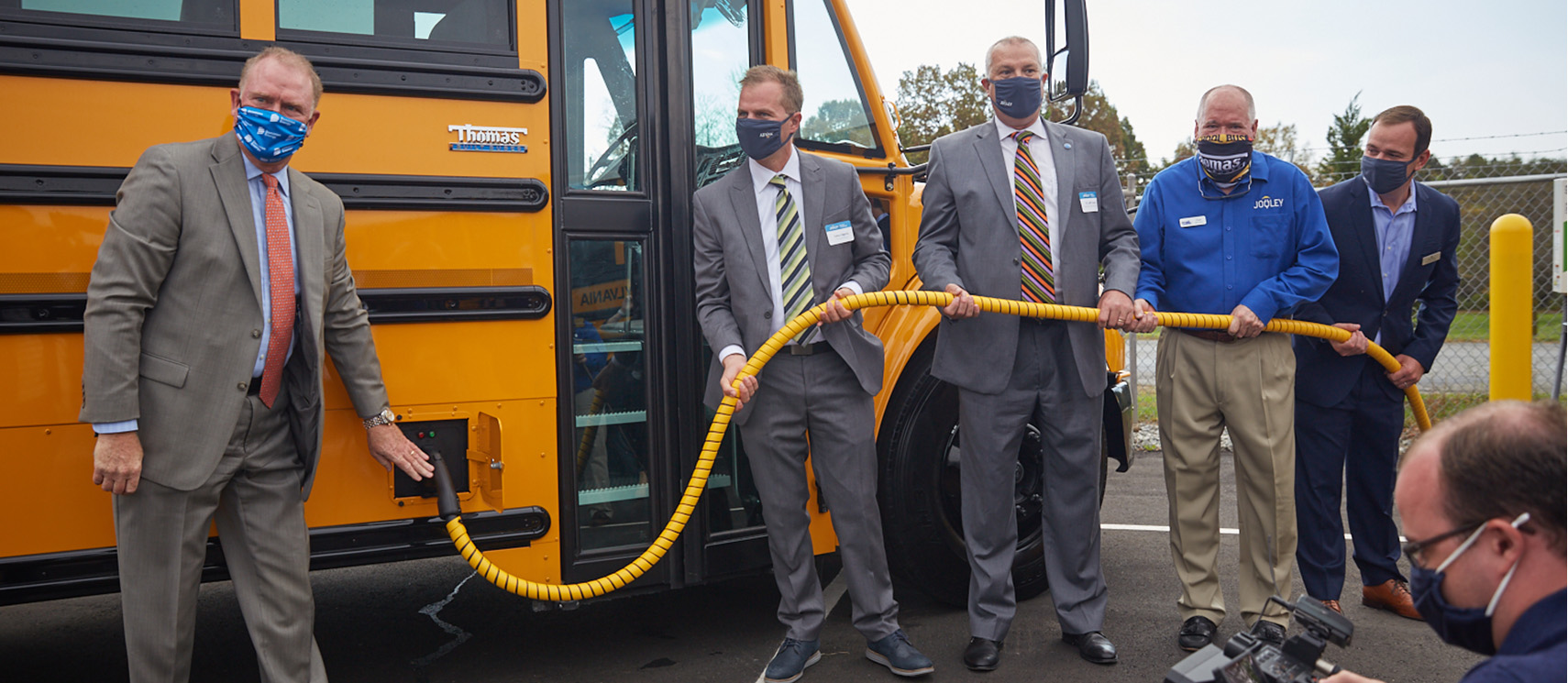
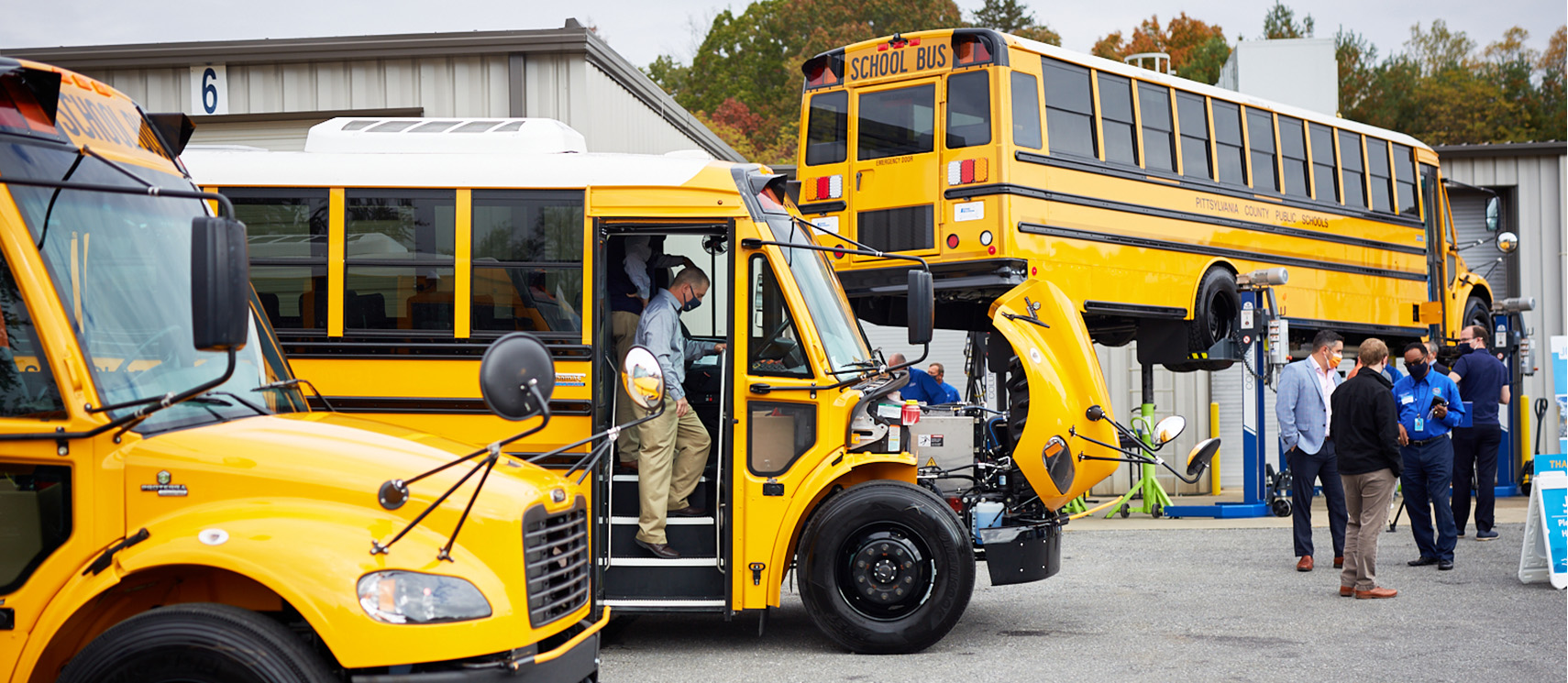
Jouley: Proven for V2G
Based on the industry’s most popular school bus, the Saf-T-Liner C2, Jouley delivers the power and performance you would expect, all with zero emissions at the tailpipe and no noise pollution. Its industry-leading features and technology make it a perfect choice for V2G applications.
DC fast charging
The Proterra® utility-preferred DC charging solution is optimized for bi-directional power flow – and on Jouley, DC power comes standard.
226 kWh Proterra battery
Optimal size for V2G. Smart grid-ready. Utilizes the ISO 15118-2 digital communications protocol for smart charging.
Smart charge management
APEX software, offered through Proterra, allows for streamlined, efficient V2G scheduling and smart charging.
V2G bi-directional capability
Chargers compliant with UL-1741 certification.
Plug in, and let us lead the way.
Ready to learn more about Jouley and V2G – and creating a greener, more efficient power grid? As the Electric Bus Authority, our team has the experience, expertise and partnerships to get you started.
